An Experimental Study into the Behaviour of Tube and Fitting Scaffold Structures under Cyclic Side and Vertical Loads
Abstract
:1. Introduction
1.1. Historical Introduction
1.2. Paper Objectives
2. Material Properties
3. Test Procedure
4. Test Results
5. Conclusions
Author Contributions
Funding
Institutional Review Board Statement
Informed Consent Statement
Data Availability Statement
Acknowledgments
Conflicts of Interest
References
- Abdel-Jaber, M.; Abdel-Jaber, M.S.; Beale, R.G.; Allouzi, R.; Shatarat, N.K. Properties of tube and fitting scaffold connections under cyclical loads. J. Constr. Steel Res. 2020, 168, 106008. [Google Scholar] [CrossRef]
- BSI. BS EN 74-1, Couplers, Spigot Pins and Baseplates for Use in Falsework and Scaffolds–Part 1: Couplers for Tubes–Requirements and Test Procedures; British Standards Institution: London, UK, 2005. [Google Scholar]
- BSI. BS 5975:2008+A1:2011–Code of Practice for Temporary Structures Procedures and the Permissible Stress Design of Falsework, 3rd ed.; British Standards Institution: London, UK, 2014. [Google Scholar]
- BSI. EN 12811-1:2003. Temporary Works Equipment, Part 1: Scaffolds-Performance Requirements and General Design; British Standards Institution: London, UK, 2005. [Google Scholar]
- Lightfoot, E.; Bhula, D. The idealisation of scaffold couplers for performance tests and scaffold analysis. Mat. Const. 1977, 10, 159–168. [Google Scholar] [CrossRef]
- Lightfoot, E.; Olivetto, G. The Collapse Strength of Tubular Steel Scaffold Assemblies. Proceedings. Instution. Civ. Eng. 1977, 63, 311–329. [Google Scholar] [CrossRef]
- Beale, R.; Godley, M. The analysis of scaffold structures using LUSAS. In Proceedings of the LUSAS ‘95, Tewkesbury, UK, 3–6 September 1995; pp. 10–24. [Google Scholar]
- Beale, R.G.; Godley, M.H.R. Numerical modelling of tube and fitting access scaffold systems. Adv. Steel Constr. 2006, 2, 199–223. [Google Scholar]
- Abdel-Jaber, M.S.; Beale, R.G.; Shatarat, N.K.; Shehadeh, M.A. Experimental and theoretical investigation of spigot connections. Adv. Steel Constr. Int. J. 2019, 5, 30–46. [Google Scholar]
- André, J.; Beale, R.G.; Baptista, A.M. Experimental and theoretical investigation of Cuplok® Spigot Connections. In Proceedings of the Eighth International Conference on Steel and Aluminium Structures ICSAS 2016, Hong Kong, China, 7–9 December 2016; p. 16. [Google Scholar]
- Chu, A.Y.T.; Chan, S.L.; Chung, K.F. Stability of modular steel scaffolding systems—Theory and verification. In Advances in Building Technology; Elsevier: Hong Kong, China, 2002; Volume 1, pp. 621–628. [Google Scholar]
- Chen, Y.Y.; Sun, W.; Chan, T.M. Effect of loading protocols on the hysteresis behaviour of structural carbon steel with yield strength up to 460N/mm2. Adv. Struct. Eng. 2013, 16, 707–719. [Google Scholar] [CrossRef]
- Chen, Y.Y.; Sun, W.; Chan, T.M. Cyclic stress-strain behaviour of structural steel with yield strength up to 460 N/mm2. Front. Struct. Civ. Eng. 2014, 8, 178–186. [Google Scholar] [CrossRef]
- Peng, J.L.; Yen, T.; Pan, A.D.E.; Chen, W.F.; Chan, S.L. Advances in Steel Structures ICASS ’96; Elsevier: Hong Kong, China, 1996; pp. 251–256. [Google Scholar]
- Peng, J.; Ho, C.; Lin, C.; Chen, W. Load carrying capacity of single-row steel scaffolds with various setups. Adv. Steel Constr. 2015, 11, 185–210. [Google Scholar]
- Chandrangsu, T.; Rasmussen, K. Investigation of geometric imperfections and joint stiffness of support scaffold systems. J. Constr. Steel Res. 2011, 67, 576–584. [Google Scholar] [CrossRef]
- Chandrangsu, T.; Rasmussen, K. Structural modelling of support scaffold systems. J. Constr. Steel Res. 2011, 67, 866–875. [Google Scholar] [CrossRef]
- Abdel-Jaber, M.; Abdel-Jaber, M.S.; Beale, R.G.; Shatarat, N.K. Cyclic Loading applied to Sleeve Couplers for Tube and Fitting Scaffolds. In ACMS25: Proceedings of the 25th Australasian Conference on Mechanics and Structural Materials (Lecture Notes in Civil Engineering); Springer: Berlin/Heidelberg, Germany, 2019; Volume 37, Chapter 78. [Google Scholar]
- Abdel-Jaber, M.S.; Beale, R.G.; Godley, M.H.R.; Abdel-Jaber, M. Rotational Strength and stiffness of Tubular Scaffold Connectors. Proc. Inst. Civ. Eng. Struct. Buil. 2009, 162, 391–403. [Google Scholar] [CrossRef]
- Beale, R.G. Scaffold Research–A review. J. Constr. Steel Res. 2014, 98, 188–200. [Google Scholar] [CrossRef] [Green Version]
- Beale, R.; André, J. Design Solutions and Innovations in Temporary Structures; IGI Global: Hershey, PA, USA, 2017. [Google Scholar]
- GB/T/1591-2008. High Strength Low Alloy Structural Steel; National Standards of the Peoples Republic of China: Taipei, Taiwan, 2009. [Google Scholar]
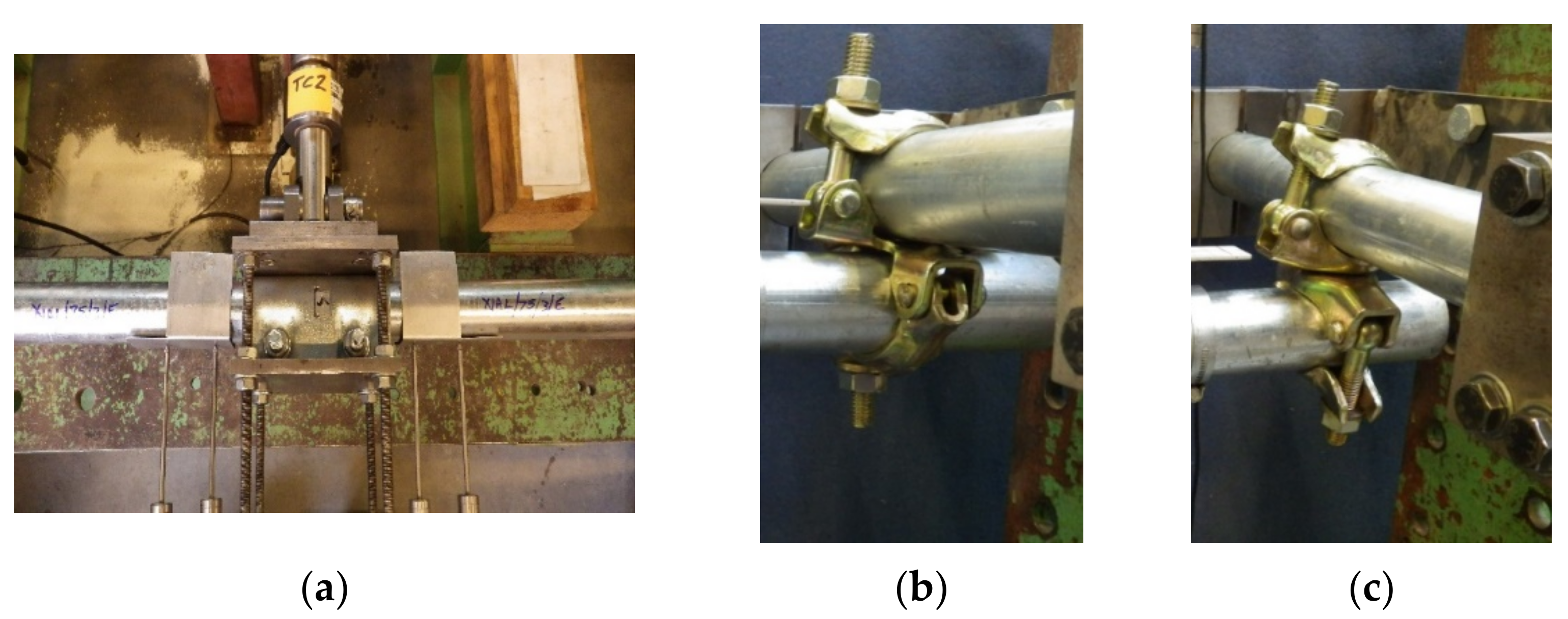
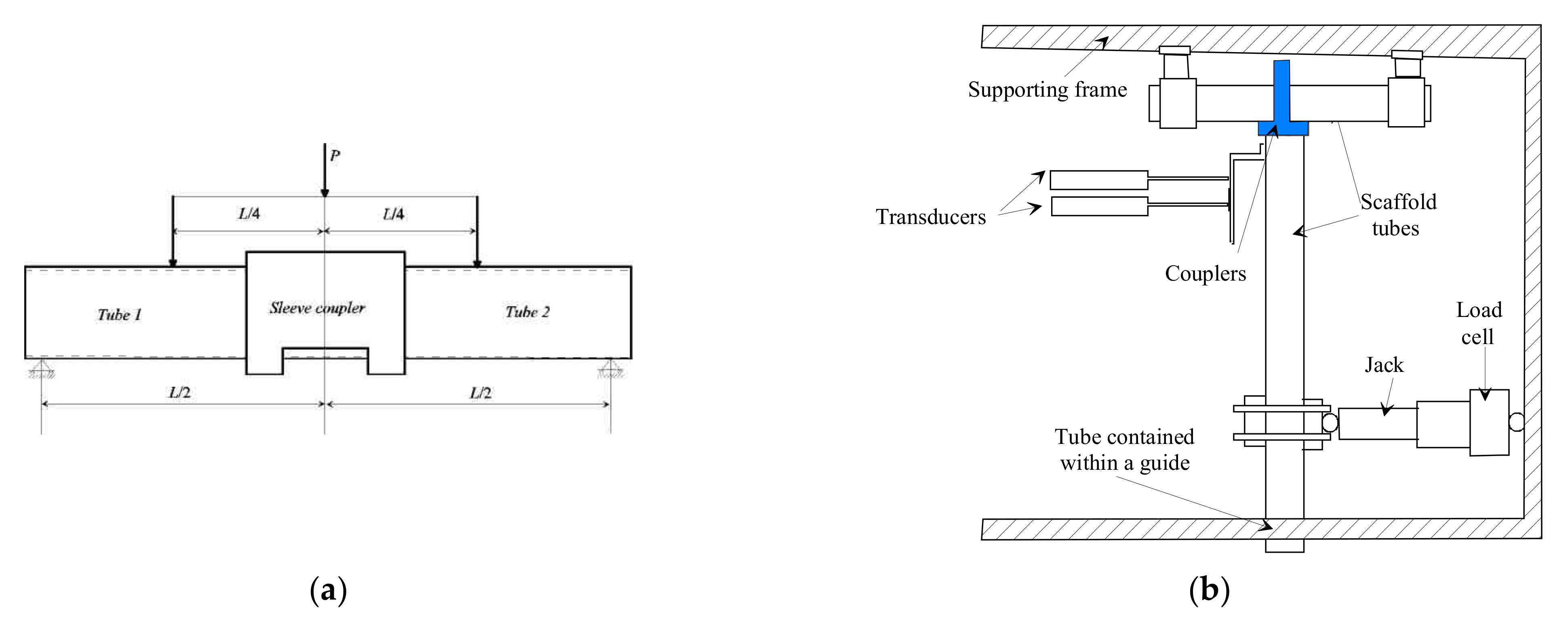
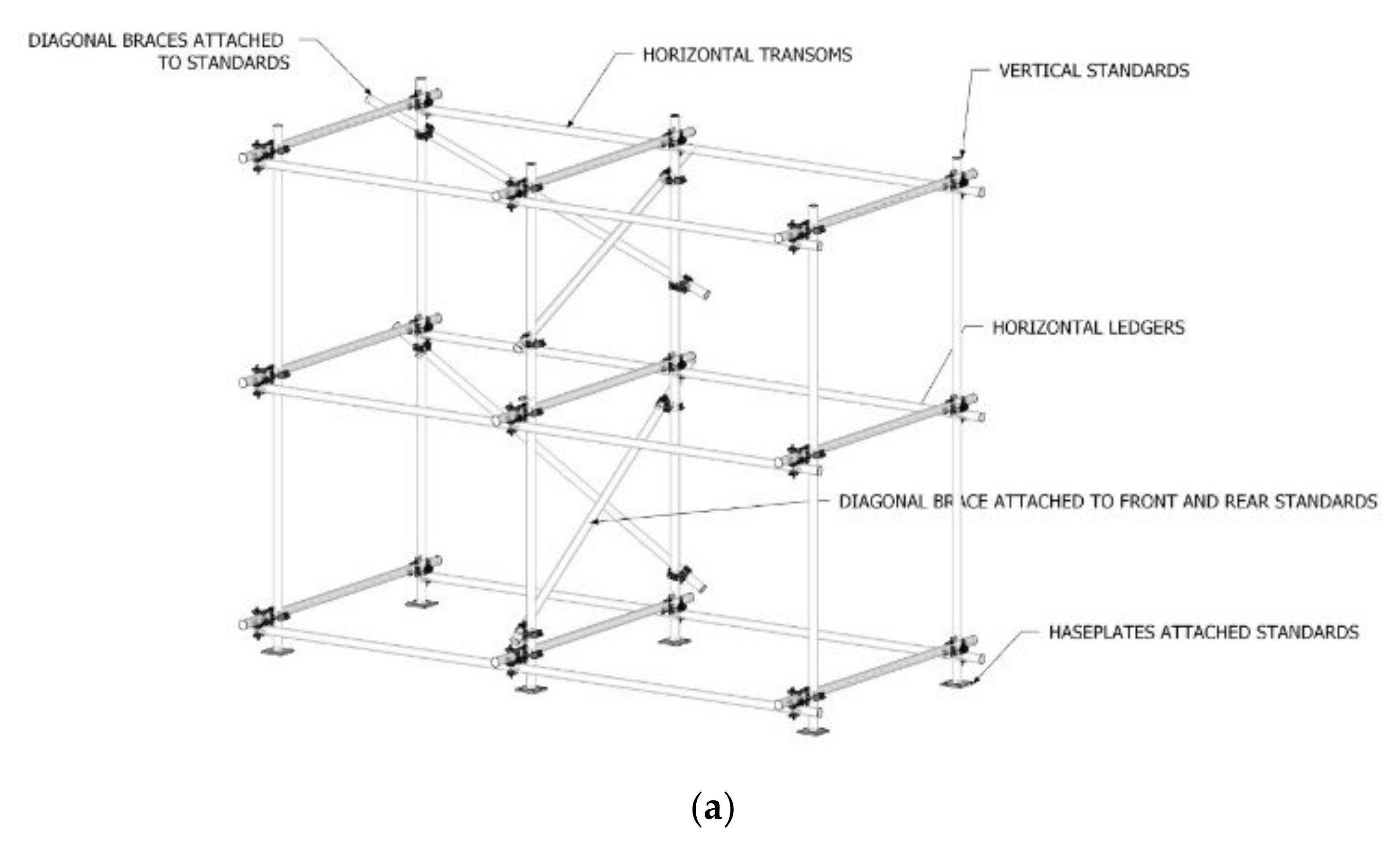




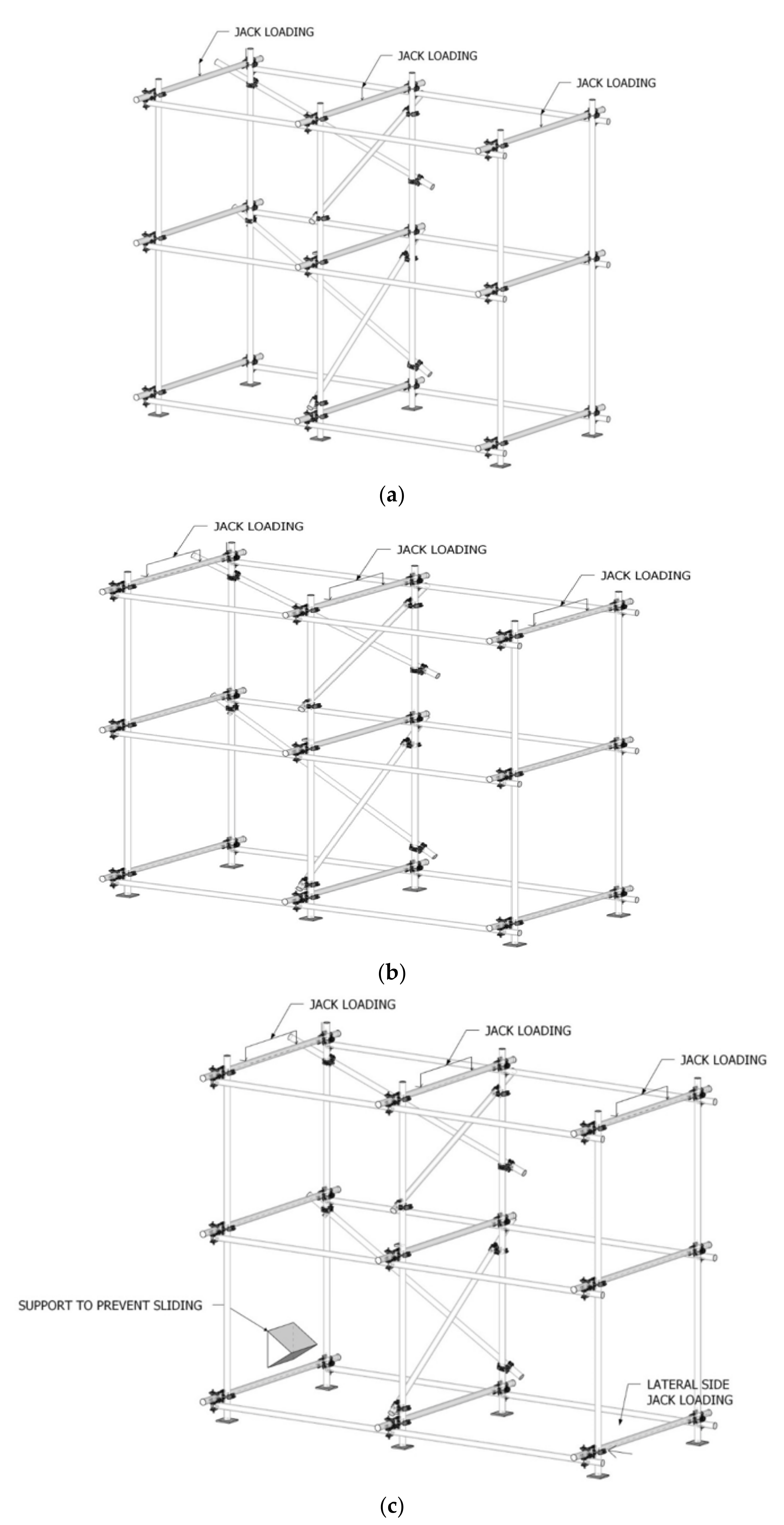
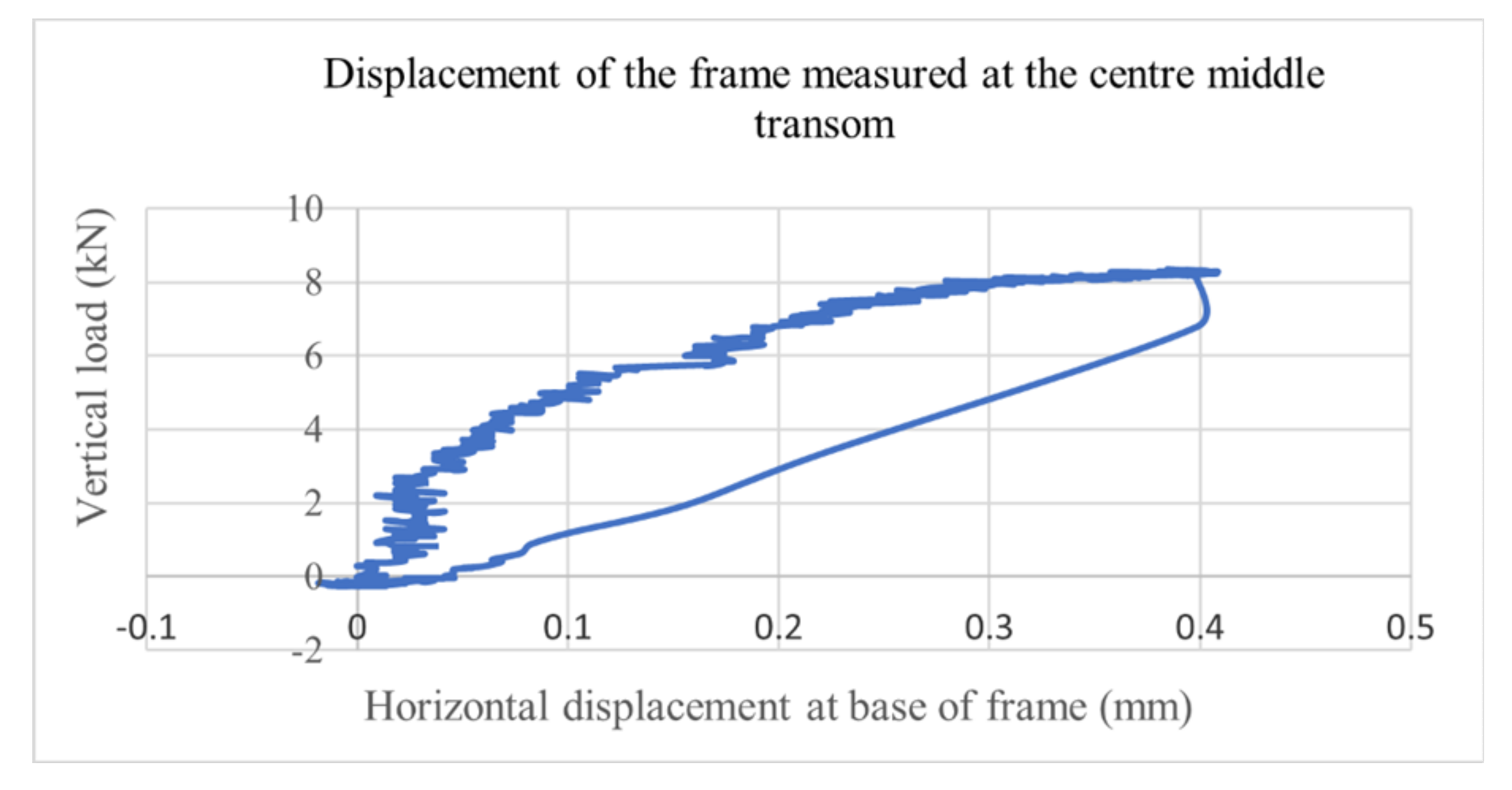
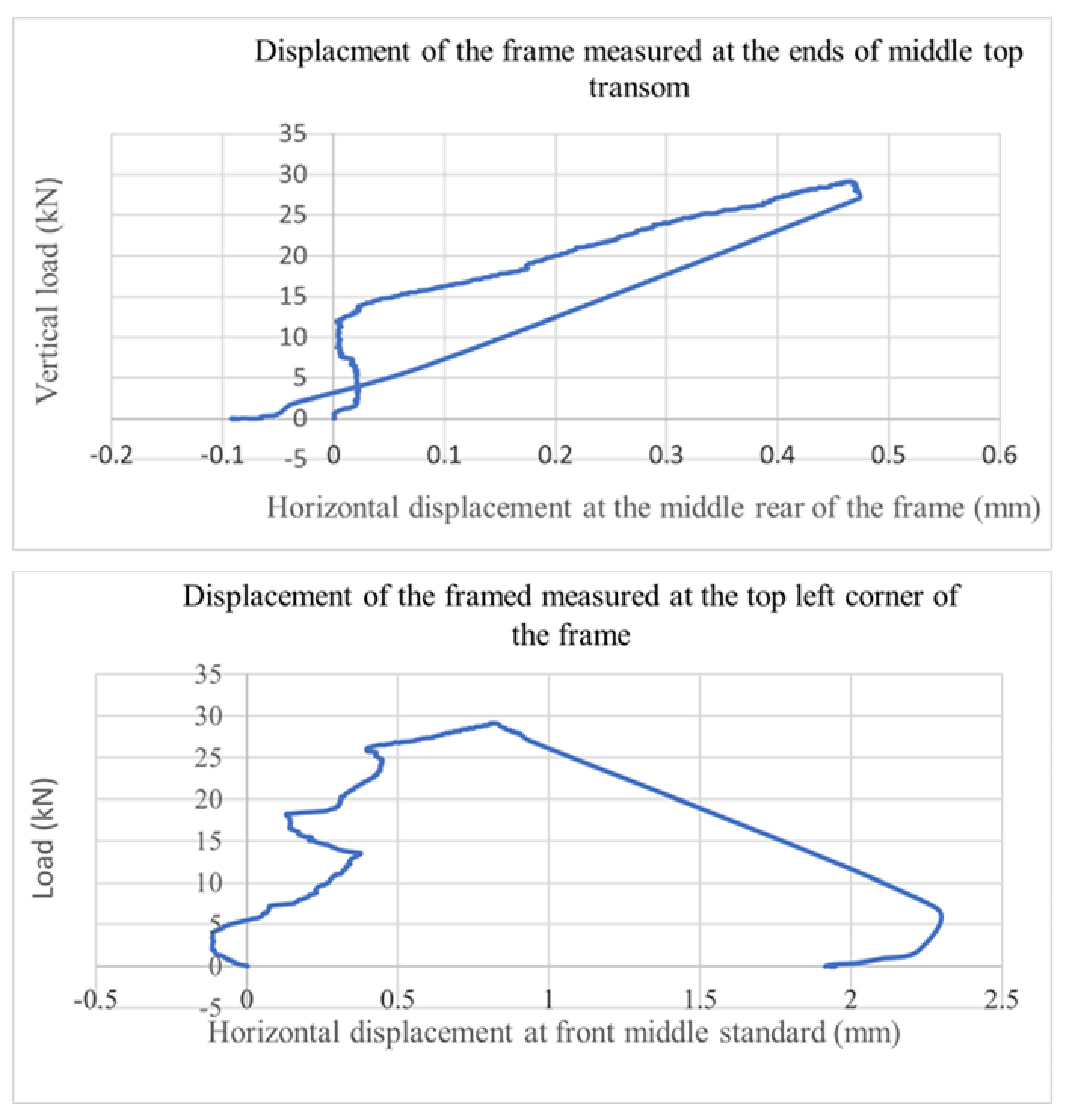

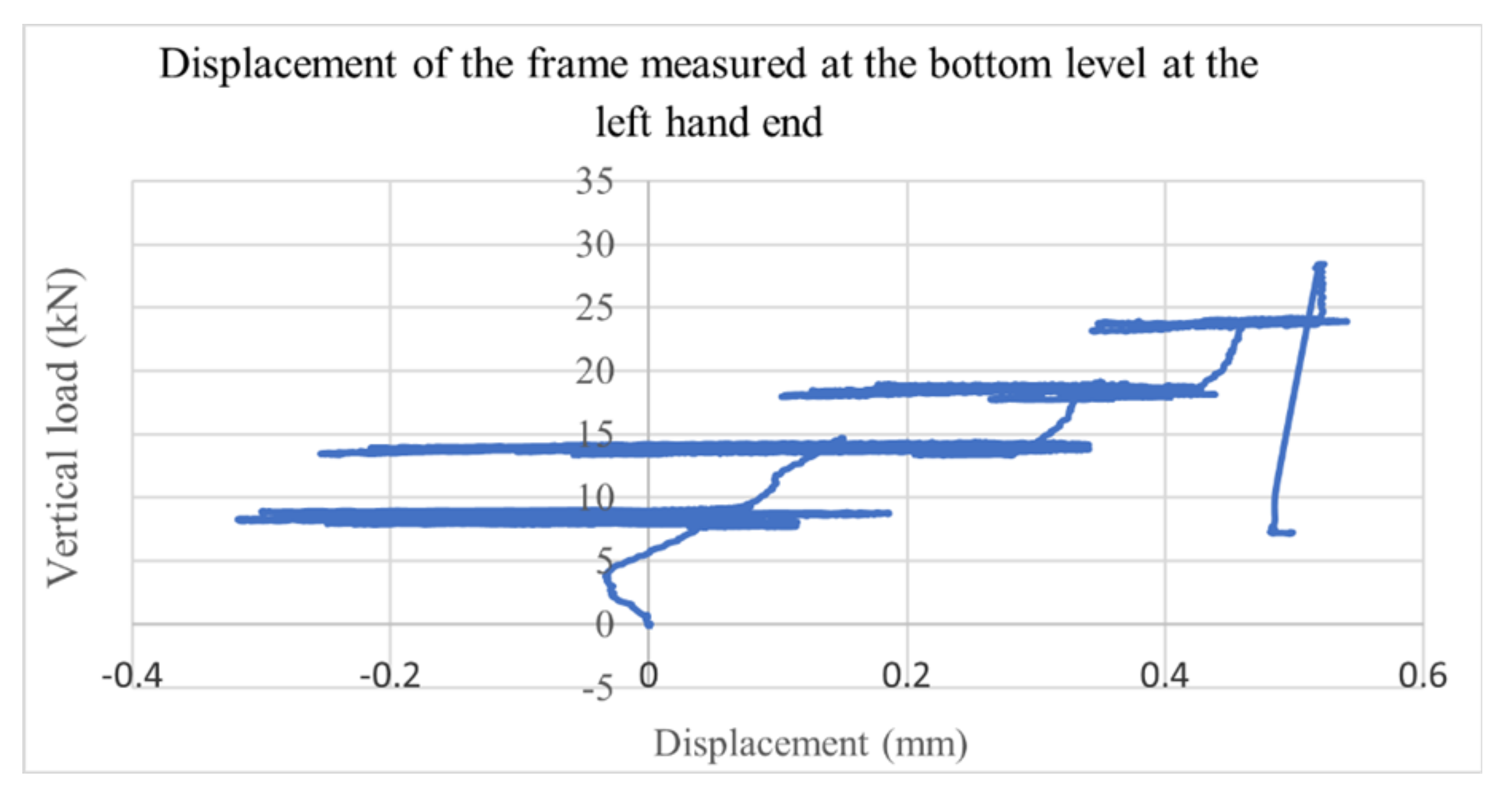

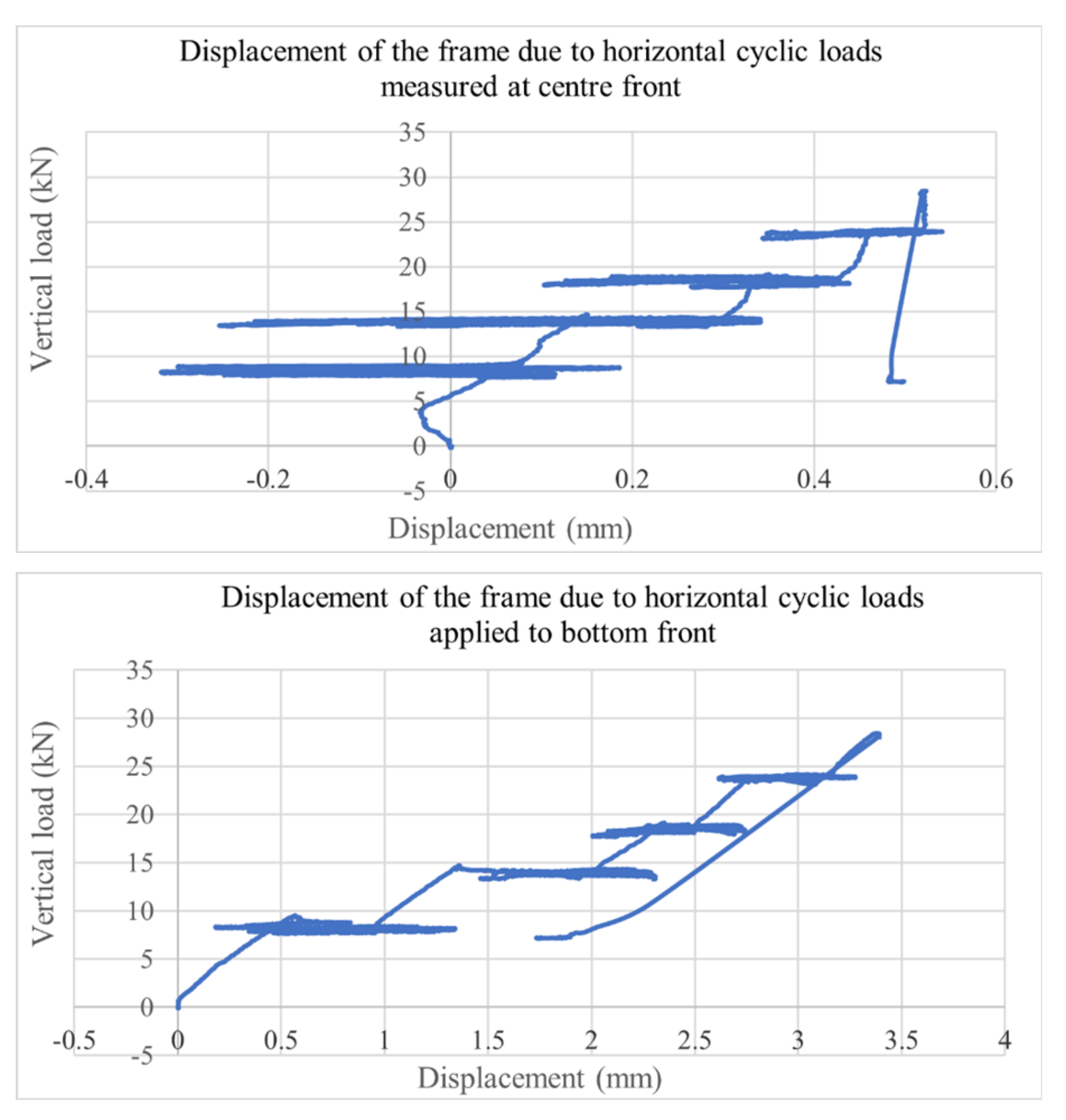
| Test Number | Maximum Vertical Load (kN) | Horizontal Loading (kN) | Displacement at End of Test (mm) |
|---|---|---|---|
| 1 | 10.0 | 0.0 | −0.02 to 0.0 |
| 2 | 30.0 | 0.0 | −0.20 |
| 3 | 20.0 | +12 to −12 (cyclic) | 0.25 |
| 4 | 20.4 | +5.5 to −9.0 (cyclic) | −0.3 to −0.25 (different cycles) |
| 5 | 22.6 | +5.0 to −9.0 (cyclic) | −0.35 to 0.5 (different cycles) |
Publisher’s Note: MDPI stays neutral with regard to jurisdictional claims in published maps and institutional affiliations. |
© 2021 by the authors. Licensee MDPI, Basel, Switzerland. This article is an open access article distributed under the terms and conditions of the Creative Commons Attribution (CC BY) license (https://creativecommons.org/licenses/by/4.0/).
Share and Cite
Abdel-Jaber, M.; Abdel-Jaber, M.S.; Beale, R.G. An Experimental Study into the Behaviour of Tube and Fitting Scaffold Structures under Cyclic Side and Vertical Loads. Metals 2022, 12, 40. https://doi.org/10.3390/met12010040
Abdel-Jaber M, Abdel-Jaber MS, Beale RG. An Experimental Study into the Behaviour of Tube and Fitting Scaffold Structures under Cyclic Side and Vertical Loads. Metals. 2022; 12(1):40. https://doi.org/10.3390/met12010040
Chicago/Turabian StyleAbdel-Jaber, Ma’en, Mu’tasim S. Abdel-Jaber, and Robert G. Beale. 2022. "An Experimental Study into the Behaviour of Tube and Fitting Scaffold Structures under Cyclic Side and Vertical Loads" Metals 12, no. 1: 40. https://doi.org/10.3390/met12010040
APA StyleAbdel-Jaber, M., Abdel-Jaber, M. S., & Beale, R. G. (2022). An Experimental Study into the Behaviour of Tube and Fitting Scaffold Structures under Cyclic Side and Vertical Loads. Metals, 12(1), 40. https://doi.org/10.3390/met12010040






